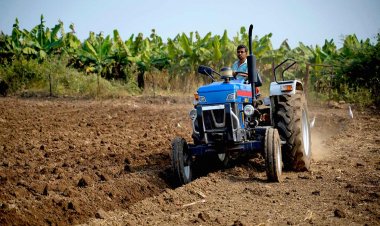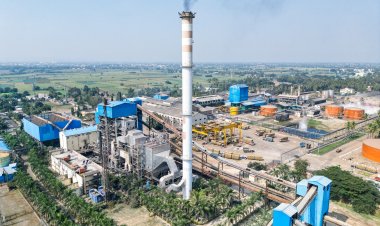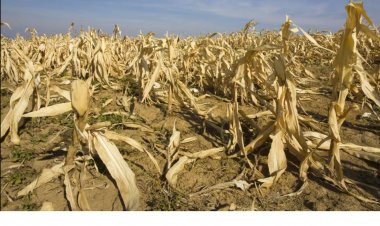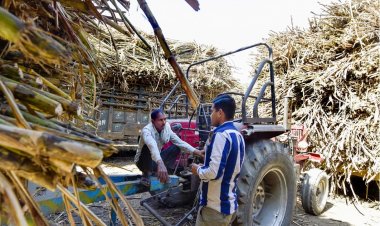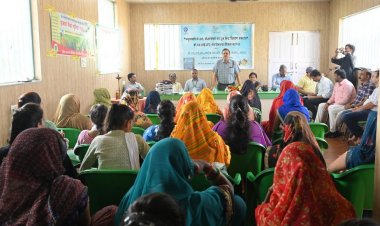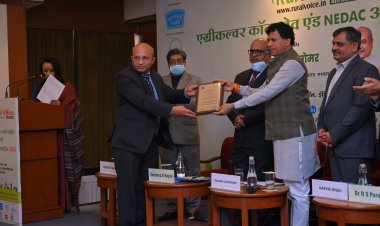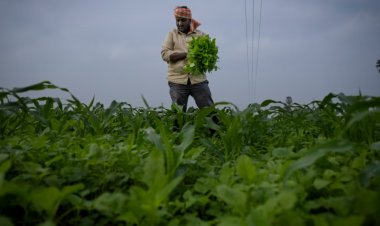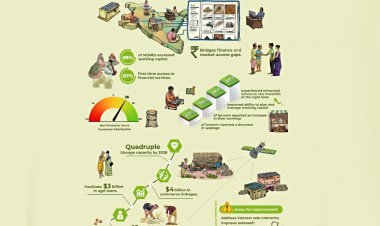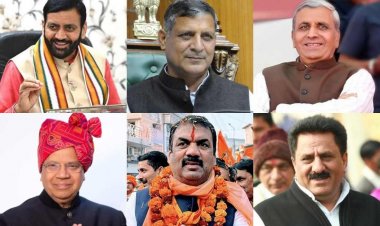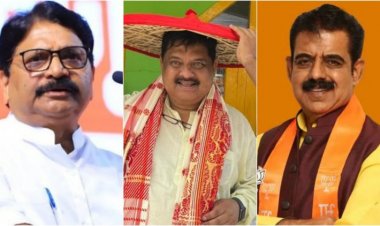Budget 2023-24: How much rural friendly?
If we put allocation for Rural development and Agriculture together, we found that these sectors which are for farmers, women and laboures have been marginalized. It will not only have impact on these sectors but also on non-agriculture sector through demand for their products
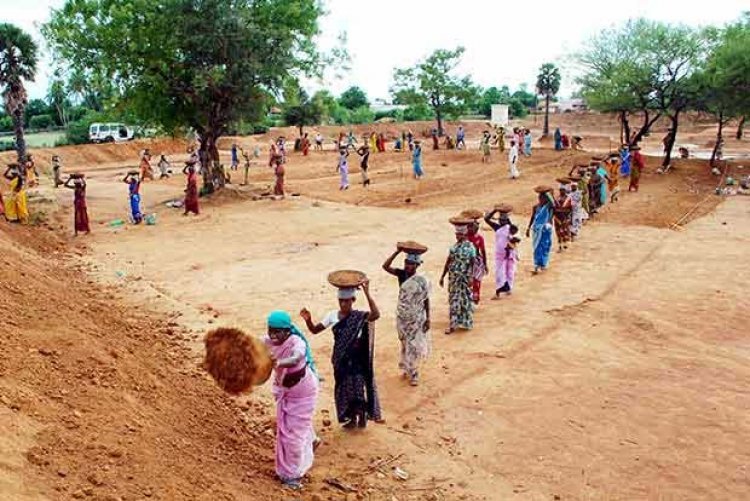
In the last budget of the Government, I had commented that it had caste biases. The present budget is also suffering from caste prejudices when one examines proposals contained in the budget proposals. In different communication channels lofty ideas like ‘Amrit Kaal’ has been cherished by introducing new schemes and more allocation for capital formation. But how the capital for investment is being managed is rarely commented except a few. In this piece, the proposals of the present budget have been examined through rural lens and I have tried to argue for such proposals which would be useful to bring out marginalised masses from labyrinth of poverty, unemployment and inequality.
Let us give some facts before moving ahead for arguments. The Global Multi-Dimensional Poverty Index GMPI reveals that five out of six people living in multidimensional poverty in India. Poverty level were highest among the STs (50.6%), followed by SCs (33.3%) and OBCs (27.2%) whereas the poverty levels among others (other than STs, SCs and OBCs) was the lowest (15.6%). The assets held by the STs, SCs and OBCs are disproportionately less as compared to other households (who are not STs, SCs and OBCs). In term of Global Hunger Index, India’s raked among 121 countries slipped to 107th position from the last year’s 101st position. These statistics show that proposals of the budget may be such which keep people in centre in the approach of the budget. First, let us, comments on the allocation of the Ministry of Rural Development (MoRD). But before that let us know the main mandate of the MoRD, which says “Uplifting the deprived rural households through multidimensional support including for assets, livelihoods, infrastructure and services. Adopting a saturation approach and ensuring resilience to families and communities…
Raising institutions of poor and forging partnerships with PRIs and other drivers of transformation. If one sees the allocation in the light of the mandate of the Ministry, realize desperation because the allocation for the year 2023-24 has been reduced more than 13 per cent as compared to revise estimate of it for the year 2022-23. Not only this, as calculated by the CBGA budget allocation/expenditure of the Department of Rural Development as percentage in the Union Budget and GDP have been reduced.
For instance, as percentage of total budgetary expenditure, which was 4.3 in 2022-23(RE) has been reduced to 3.5 in 2023-24(BE). Further, allocation as percentage of GDP, which was 0.66 in 2022-23(RE) has been reduced to 0.52 in 2023-24(BE). It is clear from above analysis that fiscal support to rural development has been curtailed. Seeing the mandate of the Ministry one can say that although Government use name of Gandhi for umpteen tasks but what he said to be followed as a yardstick for decision makers has not been taken into consideration. He said “Recall the face of the poorest and weakest man you have seen, and ask yourself if this step you contemplate is going to be of any use to him.”
Secondly, the Shyama Prasad Mukherji Rurban Mission (SPMRM), which was launched by the Prime Minister seven year before on February 21, 2016 with an outlay of Rs.5142.08 crore with the vision to “develop a cluster of villages that preserve and nurture the essence of rural community life with focuses perceived to be essentially urban in nature, thus creating a cluster on equity and inclusiveness without compromising with the facilities perceived to be essentially urban in nature, thus creating a cluster of Rurban Villages”.
In other words, it would like a body which has a soul and structure of flesh and bone to cover the soul. Here, soul is villages’ culture/community life and flesh and bones are various infrastructure. The Prime Minister in his message included in the Framework of Implementation said that: “No rural development effort will be successful unless our Gram Panchayats are engaged and involved in its planning and implementation. Hence, I request the state and district machineries to closely engage and involve the GPs in the identification of the Rurban cluster.”
Not only this, while concluding his message he said that “Through this Mission let us strive to realize Gandhiji’s vision of Gram Swaraj to make rural areas their own republic and quoted Gandhiji “independent of its neighbours for its own vital wants and yet interdependent for many others in which dependence is necessary.” The Scheme which was so eulogized is no more part of the schemes of the MoRD as it has been deleted from the list of schemes. Where is holistic development? Where is GPs which were so important? Where has gone the idea of Gandhi about interdependent? Are these merely ‘Jumlas’?
One third allocation under the MGNREGA has been reduced in 2023-24(BE) as compared to 2022-23(RE). So much reduction in the allocation will reduce the income levels of rural workers who were expected to get work under it. This will in turn reduce purchasing capacity of workers, which is in turn curtailed demand for non-agriculture products.
Further, not less than one-third jobs are reserved for women. How, they would be empowered economically with less allocation under the Programme?
Now let us comments on allocations under different Heads/Schemes of the Ministry of Panchayati Raj(MoPR). The mandate of the MoPR, which was set up about more than two decades in May 2004 is to ensure the compliance of the provisions of Part IX of the Constitution, provisions regarding the District Planning Committees (DPC) as per Article 243ZD and PESA. The Ministry’s vision is to attain decentralized and participatory local self-government through Panchayats or Panchayati Raj Institutions and the mission is empowerment, enablement and accountability of the Constitution. In light of this, let us see the provisions of the budget given in the 2023-24.
The Panchayats are expected to prepare and implement plans for economic development and social justice at their levels and integration of such plan is envisaged in the constitution at district level by the DPC. This Committee among others also looked into spatial planning. The proper planning at different levels of Panchayats are necessary to enable more than three million elected representatives to prepare plans of economic development with social justice. Keeping these in view, it was expected that guidelines of Rural Areas Development Plan Formulation and Implementation should be opertionalised for planned spatial development of Panchayats. There should have been funds allocated for it in the budget because the preparation and implementation of plans which is one of the basic tasks of Panchayats has not been addressed fully so far. In this way, Panchayats which are self- governing institutions have been ignored in the budget.
There is lot of talk on organic farming and natural farming. Let us make a few comments on it. There was a scheme named as Paramparagat Krishi Vikas Yojana (PKVY). This scheme was neither budgeted in 2022-23 nor in 2023-24. However, a new scheme named as National Mission on Natural Farming is started in budget 2023-24 with an outlay of Rs.459.00 crore. Seeing the fate of other schemes like PKVY, it is difficult to say that it would also be in the next budget or some other scheme in some other name would be included in the budget.
The Union Government’s budget outlay for Agriculture and Allied Sectors as percentage of Total Union Budget Expenditure (TUBE) and as percentage of GDP have been reduced. For instance, as percentage of TUBE under these sectors was 2.95 in 2022-23(RE), has been reduced to 2.92 in 2023-24(BE). Similarly, TUBE as percentage of GDP, which was 0.45 in 2022-23(RE) has been reduced to 0.44 in 2023-24(BE).
If we put allocation for Rural development and Agriculture together, we found that these sectors which are for farmers, women and laboures have been marginalized. It will not only have impact on these sectors but also on non-agriculture sector through demand for their products. The ratio of tax and non -tax revenues to GDP in 2023-24 is virtually the same as was in the year 2022-23. However, the fiscal deficit has been curtailed to 5.9 per cent in 2023-24 from 6.4 per cent from 2022-23.
On this fact, Dr. T M Thomas Isaac former Finance Minister of Kerala observed that to achieve this fiscal stability, there were no option except to cut expenditure on agriculture, rural development and poverty alleviation. Is achieving fiscal stability at the cost of the poor the rural sector fair? It for the readers to judge and comments.
(The author is a former officer of the Indian Economic Service and currently President of the Karpa Foundation, views expressed here are his own)



 Join the RuralVoice whatsapp group
Join the RuralVoice whatsapp group




















